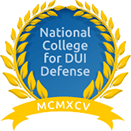The State’s reliance on Schmerber, Macuk, and Woomer is also misplaced. Schmerber did not involve any use of force by the police, nor did the defendant there object to the medical procedure out of fear or offer to submit to an alternate method of testing. Likewise, Macuk is distinguishable because the Macuk Court focused on the privilege against self-incrimination as opposed to the issue presented in this case, namely, whether the search violated defendant’s Fourth Amendment rights. Lastly, although Woomer provides a measure of support for the State’s position, the Appellate Division in that case stated that at some level of force the police conduct in pursuit of a blood sample would be impermissible.
Such is the case here. We are mindful that the consent of an accused to an otherwise valid search is not strictly required under the teachings of Schmerber, Macuk, and Woomer. In those cases each defendant ultimately submitted to the police conduct. In this case, however, defendant neither consented nor submitted to the **313 drawing of his blood as evidenced by his violent resistance to that action. To determine whether modern precepts of reasonableness have been breached, we consider all relevant factors, including the government’s need for the evidence and defendant’s interest in avoiding unnecessary bodily intrusions. In so doing, we cannot sustain this search for the reasons already stated.
IV.
[13] The dissent characterizes our reliance on Graham as “suspect,” post at 254, 777 A.2d at 317. We disagree. In Graham, the Supreme Court declared:
*247 Today we make explicit … and hold that all claims that law enforcement officers have used excessive force-deadly or not-in the course of an arrest, investigatory stop, or other “seizure” of a free citizen should be analyzed under the Fourth Amendment and its “reasonableness” standard, rather than under a “substantive due process” approach. Because the Fourth Amendment provides an explicit textual source of constitutional protection against … physically intrusive governmental conduct, that Amendment, not the more generalized notion of “substantive due process,” must be the guide for analyzing these claims.
Determining whether the force used to effect a particular seizure is “reasonable” under the Fourth Amendment requires a careful balancing of ” ‘the nature and quality of the intrusion on the individual’s Fourth Amendment interests’ ” against the countervailing governmental interests at stake.
[Graham, supra, 490 U.S. at 395-96, 109 S.Ct. at 1871, 104 L.Ed.2d at 454-55 (footnote omitted) (second emphasis added).]
Because the State’s taking of blood in this case constituted a “search” and antecedent “seizure” of defendant’s person within the meaning of our search-and-seizure jurisprudence, Graham by its own terms is relevant to our analysis. See Schmerber, supra, 384 U.S. at 767, 86 S.Ct. at 1834, 16 L.Ed.2d at 918 (concluding that administration of blood tests “plainly constitute searches of ‘persons,’ and depend antecedently upon seizures of ‘persons,’ within the meaning of [the Fourth] Amendment”).
We are satisfied that Graham provides the appropriate analytical framework within which to evaluate defendant’s constitutional claims. Within that framework, our analysis is informed by the holdings in Schmerber and the other cited cases specifically involving blood extraction. See also Hammer, supra, 932 F.2d at 844-45 (applying in part Graham balancing test in plurality opinion involving drunk-driving suspect’s forced blood sample); State v. Clary, 196 Ariz. 610, 2 P.3d 1255 (App.2000) (applying Graham balancing test in cases involving drunk-driving suspect’s forced blood sample); People v. Hanna, 223 Mich.App. 466, 567 N.W.2d 12 (1997) (same), appeal denied, 458 Mich. 862, 587 N.W.2d 637 (1998), recons. denied, 459 Mich. 1005, 595 N.W.2d 827 (1999), cert. denied, 528 U.S. 1131, 120 S.Ct. 970, 145 L.Ed.2d 840 (2000); State v. Krause, 168 Wis.2d 578, 484 N.W.2d 347 (App.) (same), review denied, 490 N.W.2d 22 (Wis.1992).
*248 The dissent places undue significance on a brief footnote in Schmerber in which the Supreme Court stated: “We ‘cannot see that it should make any difference whether [an arrestee] states unequivocally that he objects or resorts to physical violence in protest or is in such a condition that he is able to protest.’ ” Schmerber, supra, 384 U.S. at 760 n. 4, 86 S.Ct. at 1830 n. 4, 16 L.Ed.2d at 913 n. 4 (quoting **314 Breithaupt v. Abram, 352 U.S. 432, 441, 77 S.Ct. 408, 413, 1 L.Ed.2d 448, 454 (1957) (Warren, C.J., dissenting)). That statement must be viewed in context. The footnote indicates the Schmerber Court’s willingness to tolerate the use of force to confront a hypothetical suspect’s violent protestations, but such force by the police is always subject to limits. In the same footnote, the Court emphasized that “[i]t would be a different case if the police … responded to resistance with inappropriate force.” Id. at 760 n. 4, 86 S.Ct. at 1830 n. 4, 16 L.Ed.2d at 913 n. 4. Moreover, the Schmerber Court expressly stated that its holding pertained only to the fact pattern before it. Id. at 772, 86 S.Ct. at 1836, 16 L.Ed.2d at 920.
Accordingly, we do not interpret Schmerber to require us to discount or ignore a defendant’s violent reaction to blood extraction. Rather, as explained elsewhere, defendant’s reaction is but one of a number of facts that comprise the totality of the circumstances in this case. Just as the Schmerber Court made clear that some level of force by the government would be unacceptable, we recognize that, under different circumstances, some level of force by the police to obtain evidence from obstreperous defendants might be acceptable. We do not interpret the dissent as suggesting that any use of force on uncooperative suspects would be constitutionally appropriate. At bottom, our disagreement is over when such force may be applied appropriately.
The dissent also advocates a remand to afford the State the opportunity to clarify or develop the record on the availability of the Breathalyzer as well as in respect of other possible issues. Contrary to the dissent’s portrayal, our disposition does not “rel[y] heavily” on defendant’s offer to submit to a Breathalyzer, or on *249 any one factor in the analysis. Post at 257, 777 A.2d at 319. Indeed, we state at the outset of this opinion that our holding is based on “the totality of the circumstances,” ante at 253, 777 A.2d at 316, and that “the quantum of force used by the police, although significant to the analysis, is not the sole factor to be considered.” Post at 251, 777 A.2d at 315.
We are convinced that our disposition would not be altered by a remand in view of these uncontested facts: (1) defendant’s alleged offense, although serious, did not involve the death of or injury to any other person; (2) the police possessed considerable evidence of defendant’s impaired state apart from the blood sample, including that (a) defendant had flipped his car, which was found entangled in a chain-link fence, (b) the police had witnessed defendant’s erratic behavior, slurred speech, and glassy eyes, and had smelled alcohol on his breath, and (c) defendant had made a misleading call for help from his car; (3) defendant’s manifest fear of needles; (4) the nature of the search as a form of bodily intrusion; (5) defendant’s violent reaction to that intrusion; (6) the testimony of the nurse that he had extracted defendant’s blood at the request of the police; (7) the fact that two police officers assisted in the extraction by holding defendant to the table as his legs and one arm were strapped; and (8) the level of force itself.
Finally, the dissent sees strong parallels between the facts in this case and those in Schmerber. Although there may be some similarities in the two cases, there are major differences. As indicated above, in Schmerber, there was no use of force by the police, no physical resistance by the accused to the blood sample, and no indication that the accused feared needles. Clearly, those factors are evident here. We reiterate that the Schmerber Court explicitly limited its holding to the facts presented in that case. The Court stated:
**315 We thus conclude that the present record shows no violation of [the defendant’s] right under the Fourth … Amendment[ ] to be free of unreasonable searches and seizures. It bears repeating, however, that we reach this judgment only on the facts of the present record. The integrity of an individual’s person is a cherished *250 value of our society. That we today hold that the Constitution does not forbid the States minor intrusions into an individual’s body under stringently limited conditions in no way indicates that it permits more substantial intrusions, or intrusions under other conditions.
[Schmerber, supra, 384 U.S. at 772, 86 S.Ct. at 1836, 16 L.Ed.2d at 920 (emphasis added).]
In short, the “other conditions” not present in Schmerber, but present here, compel our disposition.
V.
Our holding is not to be understood as suggesting that the police had to acquire a warrant before obtaining a blood sample from defendant or that they acted in an unreasonable manner in seeking treatment for him at the hospital. Because defendant’s car was found overturned and his behavior demonstrated obvious signs of intoxication, probable cause existed for the police to seek evidence of defendant’s blood alcohol content level. Moreover, consistent with Schmerber and our analogous case law, the dissipating nature of the alcohol content in defendant’s blood presented an exigency that required prompt action by the police. Under those conditions, a warrantless search was justified. Schmerber, supra, 384 U.S. at 771, 86 S.Ct. at 1836, 16 L.Ed.2d at 920 (upholding taking of suspect’s blood without warrant due to rapid dissipation of alcohol content level in such evidence). See also Cooke, supra, 163 N.J. at 676, 751 A.2d 92 (explaining that “exigency in the constitutional context amounts to ‘circumstances that make it impracticable to obtain a warrant when the police have probable cause’ ” to act) (quoting State v. Colvin, 123 N.J. 428, 437, 587 A.2d 1278 (1991)).
Nor do we suggest that the right to be free of unreasonable searches turns solely on whether a defendant objects to police conduct or resists an otherwise legitimate law enforcement action. To the contrary, the same or even greater level of force than was used here could be reasonable in a different setting. We emphasize that the reasonableness inquiry we employ is fact sensitive and offers no sure outcomes in future cases. Graham, supra, 490 U.S. at 396, 109 S.Ct. at 1872, 104 L.Ed.2d at 456. As this case *251 demonstrates, the quantum of force used by the police, although significant to the analysis, is not the sole factor to be considered. Ibid.
Similarly, we are satisfied that our holding will not unduly hamper the ability of the police to bring intoxicated motorists to justice. First, as noted, blood or breath testing is not always critical to the State’s case. Second, we leave undisturbed the ability of the police to use all reasonable investigative techniques normally at their disposal to obtain blood samples or other proofs necessary for their work. Third, our sense from the record is that this case, with its unique facts and circumstances, is not likely to be replicated with any regularity.
In addition, with its prohibition against the use of force, New Jersey’s implied consent statute embodies the Legislature’s own concern over the intrusion engendered by conducting chemical tests against a driver’s will. The Legislature resolved those concerns by providing sanctions for any person who refuses to submit to a Breathalyzer test when lawfully accused of **316 driving while intoxicated. N.J.S.A. 39:4-50.4a. The Legislature is free to revise that statute to provide similar sanctions for persons who refuse to submit to blood tests in the same circumstances.
Lastly, we note for completeness that our disposition is required under both the Fourth Amendment and the analogous provision in the New Jersey Constitution. Although our holding is consistent with federal jurisprudence, we also conclude that the forced extraction of defendant’s blood was impermissible on State constitutional grounds for the reasons previously expressed. See Cooke, supra, 163 N.J. at 666-67, 751 A.2d 92 (outlining those instances in which “this Court has interpreted our State Constitution as affording its citizens greater protections than those afforded by its federal counterpart”). See also State v. Johnson, 168 N.J. 608, 775 A.2d 1273 (2001) (suppressing evidence obtained by invalid “no-knock” warrant on federal and State constitutional grounds).
*252 VI.
In sum, the police had probable cause to arrest defendant, and due to exigency, they were not required to obtain a search warrant authorizing the blood sample. Moreover, the police acted properly in transporting defendant to a hospital and seeking the blood test in a medically reasonable manner. We conclude, however, that the police used unreasonable force to acquire the blood sample from defendant against whom they already had considerable evidence. On that basis, the fruits of the search cannot be sustained.
VII.
The judgment of the Appellate Division is reversed. On remand to the municipal court, the evidence of defendant’s blood alcohol content will be suppressed, and defendant’s not guilty plea will be reinstated.
LaVECCHIA, J., dissenting.
The majority concludes, ante at 252, 777 A.2d at 316, that “the police had probable cause to arrest defendant, and due to exigency, they were not required to obtain a search warrant authorizing the blood sample. Moreover, the police acted properly in transporting defendant to a hospital and seeking the blood test in a medically reasonable manner.” Yet, the majority decides that application of the “objectively reasonable” test nonetheless requires that the results of the blood test must be suppressed because excessive force was employed to obtain the blood samples. The majority’s basis for its holding seems to be the lack of proof in the record that less intrusive means to test for blood alcohol content were unavailable. I disagree with the majority. Although the availability of less intrusive testing means is certainly a factor to be considered in weighing the totality of circumstances under the “objectively reasonable” test, I disagree with the majority’s conclusion that the record speaks with clarity on that issue. At best it is ambiguous. In my view, to assess properly the totality *253 of circumstances that unfolded in the early morning hours of January 18, 1997, a remand is necessary. Therefore, I respectfully dissent from the judgment of the Court.
I.
The majority recognizes Schmerber v. California, 384 U.S. 757, 86 S.Ct. 1826, 16 L.Ed.2d 908 (1966), “as the seminal case involving the forced extraction of blood from an accused,” ante at 237, 777 A.2d at 307. Winston v. Lee, 470 U.S. 753, 105 S.Ct. 1611, 84 L.Ed.2d 662 (1985), however, is instructive also. Justice Brennan wrote **317 the opinions in both Winston and Schmerber, and he discussed Schmerber extensively in his Winston opinion. Winston and Schmerber set out the relevant factors to be considered and the weight or content to be ascribed to those factors in the balancing test for determining objective reasonableness of the force used in a search of the person that implicates bodily integrity. Variables on one side of the scale are (1) “the extent to which the procedure may threaten the safety or health of the individual” and (2) “the extent of intrusion upon the individual’s dignitary interests in personal privacy and bodily integrity.” Winston, supra, 470 U.S. at 761, 105 S.Ct. at 1617, 84 L.Ed.2d at 669. The Court also has ascribed content to those variables.
When assigning weight to whether the procedure may threaten the safety or health of the individual, the Court consistently has stated: ” ‘[F]or most people [a blood test] involves virtually no risk, trauma, or pain.’ ” Ibid. (quoting Schmerber, supra, 384 U.S. at 771, 86 S.Ct. at 1836, 16 L.Ed.2d at 920); see also S.D. v. Neville, 459 U.S. 553, 563, 103 S.Ct. 916, 922, 74 L.Ed.2d 748, 758 (1983) (“The simple blood-alcohol test is … safe, painless, and commonplace.”); Breithaupt v. Abram, 352 U.S. 432, 436, 77 S.Ct. 408, 410, 1 L.Ed.2d 448, 451 (1957)(“The blood test procedure has become routine in our everyday life.”). When assigning weight to the degree of intrusion on an individual’s privacy and bodily integrity, the Court in Winston wrote: “In noting that a blood test was ‘a commonplace in these days of periodic physical examinations,’ *254 Schmerber recognized society’s judgment that blood tests do not constitute an unduly extensive imposition on an individual’s personal privacy and bodily integrity.” 470 U.S. at 762, 105 S.Ct. at 1617, 84 L.Ed.2d at 670 (citation omitted); see also Skinner v. Ry. Labor Executives’ Ass’n, 489 U.S. 602, 625, 109 S.Ct. 1402, 1417, 103 L.Ed.2d 639, 665 (1989) (noting that Schmerber established that governmentally imposed blood test is not unduly extensive imposition on person’s privacy and bodily integrity).
In contrast to those characterizations, the majority here posits the factors of “defendant’s manifest fear of needles, his violent reaction to the bodily intrusion engendered by the search, and his willingness to take a Breathalyzer test.” Ante at 242, 777 A.2d at 310. The majority also finds in Graham v. Connor, 490 U.S. 386, 109 S.Ct. 1865, 104 L.Ed.2d 443 (1989), a basis for including in the analysis the severity of the crime. The majority’s insistence that Graham is relevant here is suspect. Graham dealt with the appropriate use of force to effect an investigatory stop, or arrest, but the case before us deals with the reasonableness of force used to search an individual already under arrest. The importance of the severity of the criminal activity in weighing the reasonableness of force in the former setting is apparent. Why it is relevant to the circumstances of this case, however, escapes me.
The majority extracted two of its other factors-fear and willingness to take a Breathalyzer-from Schmerber ‘s qualifier that the defendant there was “not one of the few who on grounds of fear, concern for health, or religious scruple might prefer some other means of testing, such as the ‘Breathalyzer’ test [the defendant] refused.” 384 U.S. at 771, 86 S.Ct. at 1836, 16 L.Ed.2d at 920. Schmerber thus expressly reserved the question whether the government could forcibly extract blood when an arrestee requests an available Breathalyzer test. In Schmerber, the Court was willing to contemplate that the “fear” of a defendant would be respected when that fearful defendant requested the available alternative method. It did not **318 exalt fear, however, as something a *255 defendant may assert to avoid a search altogether. The crucial premise for respecting a defendant’s fear is that a Breathalyzer test is a readily available alternative. There is nothing in this record to indicate that was so. The majority merely presumes it to be so. Moreover, the third factor-defendant’s “violent reaction”-was specifically discounted by the Supreme Court in Schmerber. There, the Court said: “We ‘cannot see that it should make any difference whether [an arrestee] states unequivocally that he objects or resorts to physical violence in protest or is in such a condition that he is unable to protest.’ ” Schmerber, supra, 384 U.S. at 760 n. 4, 86 S.Ct. at 1830 n. 4, 16 L.Ed.2d at 913 n. 4 (quoting Breithaupt, supra, 352 U.S. at 441, 77 S.Ct. at 413, 1 L.Ed.2d at 454 (Warren, C.J., dissenting)). Yet, the majority here claims that defendant’s “violent reaction” should be a factor militating against the reasonableness of the search.
The majority emphasizes that defendant was charged with drunk driving, which is a quasi-criminal offense, as if that fact should somehow limit the State’s ability to obtain evidence of guilt. It also refers to the existence of “considerable proofs apart from the blood evidence.” Ante at 243, 777 A.2d at 310. The majority’s analysis is in contradiction to Winston, Schmerber, and Breithaupt. In Winston, the Court determined that the identified individual interests must weigh against the community’s interest in fairly and accurately determining guilt or innocence. This interest is of course of great importance. We noted in Schmerber that a blood test is “a highly effective means of determining the degree to which a person is under the influence of alcohol.” Moreover, there was “a clear indication that in fact [desired] evidence [would] be found” if the blood test were undertaken. Especially given the difficulty of proving drunkenness by other means, these considerations showed that results of the blood test were of vital importance if the State were to enforce its drunken driving laws.
[470 U.S. at 762-63, 105 S.Ct. at 1617-18, 84 L.Ed.2d at 670 (emphasis added) (citations omitted).]
That view from Winston and Schmerber is buttressed by the Court’s observations in Breithaupt:
Modern community living requires modern scientific methods of crime detection lest the public go unprotected. The increasing slaughter on our highways, most of which should be avoidable, now reaches the astounding figures only heard of on the *256 battlefield. The States, through safety measures, modern scientific methods and strict enforcement of traffic laws, are using all reasonable means to make automobile driving less dangerous.
As against the right of an individual that his person be held inviolable, even against so slight an intrusion as is involved in applying a blood test of the kind to which millions of Americans submit as a matter of course nearly every day, must be set the interests of society in the scientific determination of intoxication, one of the great causes of the mortal hazards of the road. And the more so since the test likewise may establish innocence, thus affording protection against the treachery of judgment based on one or more of the senses. Furthermore, since our criminal law is to no small extent justified by the assumption of deterrence, the individual’s right to immunity from such invasion of the body as is involved in a properly safeguarded blood test is far outweighed by the value of its deterrent effect due to **319 public realization that the issue of driving while under the influence of alcohol can often by this method be taken out of the confusion of conflicting contentions.
[352 U.S. at 439-40, 77 S.Ct. at 412, 1 L.Ed.2d at 452-53 (emphasis added) (footnotes omitted).]
Therefore, in Winston, Schmerber, and Breithaupt, the Supreme Court considered the seriousness of the charge of drunk driving and available evidence of guilt, and came to conclusions that were precisely contrary to that reached by the majority here.
Schmerber speaks specifically to the irrelevance of the existence of “considerable proofs apart from blood evidence.” There, the Court described how “[t]he police officer who arrived at the scene shortly after the accident smelled liquor on [the defendant’s] breath, and testified that [the defendant’s] eyes were ‘bloodshot, watery, sort of a glassy appearance.’ The officer saw [the defendant] again at the hospital, within two hours of the accident. There he noticed similar symptoms of drunkenness.” 384 U.S. at 768-69, 86 S.Ct. at 1834-35, 16 L.Ed.2d at 918-19. The closeness of that description strikingly compares with the majority’s description of the alternative proofs in this case: “Defendant had flipped his car, and the police had witnessed his erratic behavior, slurred speech, and glassy eyes, and had smelled alcohol on his breath. Further, defendant’s misleading call for help from the car had evidenced his impaired state.” This Court’s description essentially mirrors Schmerber ‘s description. Schmerber articulated those facts not to explain why a blood test was unnecessary, but to show that probable cause to arrest was established and that a test of the *257 defendant’s blood alcohol content would be exceptionally probative in confirming intoxication. An irony thus is built into the majority’s analysis: The more direct-observation evidence or proof police have to establish probable cause to arrest and that a blood test is likely to produce success (the Schmerber standard), the less police have reason to pursue a blood test because “considerable proofs apart from the blood evidence” exist, ante at 243, 777 A.2d at 310. The fact that a defendant “exhibit[s] numerous other indicia of intoxication does not negate the state’s need for [the defendant’s] BAC. On the contrary, accurate, scientific evidence of BAC is needed to secure [DUI] convictions so that those who drive while intoxicated will be punished and others will be deterred from doing so.” State v. Krause, 168 Wis.2d 578, 484 N.W.2d 347, 352 (App.), review denied, 490 N.W.2d 22 (Wis.1992).
II.
As noted, the majority relies heavily on the fact that defendant was restrained during the taking of the blood specimens and that he offered to take a Breathalyzer test once he was at the hospital. Nonetheless, a blood test was taken by medical personnel and the record is unclear whether it was taken, in part, for diagnostic purposes. Concerning the restraints, it is true that while at the hospital, defendant was restrained with arm and leg straps. And, while taking the blood sample, the nurse was assisted by a police officer who kept defendant’s arm still. The record unmistakenly reflects that defendant was not restrained by the straps applied to his arm and legs in order to take a blood sample. Defendant was strapped to the examination table because he was so unruly and aggressive that he attempted to punch the attending physician who sought to take defendant’s blood pressure upon his arrival in the emergency ward. Anyone who has spent time in a hospital emergency ward **320 knows the obvious danger to medical staff and other patients posed by aggressive and violent patients brought in, often by police, as a result of alleged criminal activity. Whether due to drug ingestion, knife or gunshot wounds or, as here, a *258 suspected drunk driving accident, police escort to the hospital is de regeur to provide immediate medical evaluation and necessary care to a suspect, or one already placed under arrest.
The police acted reasonably in bringing defendant to the hospital in the first instance after finding him in an overturned car with a chain link fence wrapped around it. Defendant’s agitation started while at the accident scene. He was aggressive and uncooperative as the police and emergency medical personnel attempted to provide him with care. He made unreasonable statements. All that can reflect the existence of internal injuries. The majority notes the reasonableness of the police action in bringing defendant to the hospital. The record also reflects that defendant was placed in strapped restraints upon defendant’s physical attack of medical personnel. Yet, somehow the majority finds that combination of circumstances to translate into objectively unreasonable police behavior. Similarly, the majority finds it unreasonable for the police to have helped keep defendant’s arm still while medical staff extracted a blood specimen from a patient. I would find it unreasonable not to acknowledge that police officers are called upon regularly to perform such necessary tasks in emergency wards. Defendant is not the first patient to resist during the course of medical evaluation or treatment.
What is different here is that the majority is not convinced that the medical staff was taking the blood for its own purposes. Instead, the majority suggests that the blood sample was taken only to accommodate the police request. That conclusion rests on the slim reed of inconclusive testimony that was not fully explored in the record below. That inadequacy in the record, coupled with other critical inadequacies, should compel a remand on the objective reasonableness of the police officers’ action. The majority acknowledges the incompleteness of the record concerning the availability of Breathalyzer equipment at the hospital. Also, the majority’s opinion reflects the incompleteness of the record concerning whether defendant could be taken from the hospital to a Breathalyzer unit at police headquarters or whether a mobile *259 Breathalyzer unit could be brought to the hospital. Instead of requiring a remand to examine those critical elements, the majority simply concludes that the police did not demonstrate that a Breathalyzer was not available, nor did the police show that they could not take defendant to one once defendant was at the hospital.
The majority, ante at 243, 777 A.2d at 310, favorably cites two Ninth Circuit cases, Nelson v. City of Irvine, 143 F.3d 1196 (9th Cir.), cert. denied, 525 U.S. 981, 119 S.Ct. 444, 142 L.Ed.2d 399 (1998), and Hammer v. Gross, 932 F.2d 842 (9th Cir.) (en banc), cert. denied, 502 U.S. 980, 112 S.Ct. 582, 116 L.Ed.2d 607 (1991). But both cases illustrate why a remand on the Breathalyzer issue is critical in the present appeal. In Hammer, “a majority of the en banc panel indicated that if an alternative test is readily available, and the suspect requests it, a rational jury could conclude that it is unreasonable and in violation of the Fourth Amendment for police officers to insist on a blood test.” Nelson, supra, 143 F.3d at 1202-03 (emphasis added). In his concurrence Judge Kozinski, also criticizing the majority in Hammer for invoking Graham, directed his conclusion to the essential and determinative fact, namely that the officer “acted properly in every **321 respect but one: He failed to give Hammer an alternative test when Hammer consented to it and when ( it appears from the record ) the alternative was readily available.” Hammer, supra, 932 F.2d at 853 (Kozinski, J., concurring in part) (emphasis added). Judge Kozinski set out a reasonableness standard:
If an alternative test is readily available and a suspect requests it, police officers may not arbitrarily refuse to administer it simply because the suspect did not have the presence of mind to make a decision more promptly or because he changed his mind. The standard, as always under the fourth amendment, is reasonableness. Defendants have offered no explanation for [the officer’s] refusal to comply with Hammer’s request. Based on the evidence, the jury could conclude that [the officer’s] refusal to administer an alternative test was unreasonable.
[Id. at 852 (Kozinski, J., concurring in part).]
In Nelson, the Ninth Circuit similarly held that “[w]hen an arrestee has agreed to submit to a breath or urine test which is *260 available and of similar evidentiary value, the government’s need for a blood test disappears.” 143 F.3d at 1207 (emphasis added). Instead of deciding the matter then, the Ninth Circuit stated that “[f]actual development at trial may affect the ultimate determination whether the plaintiffs’ requests for alternative forms of testing, which the police refused to respect, were in fact reasonable under the circumstances.” Ibid.
The majority here notes that the police were reasonable in their insistence that defendant go to the hospital as a precautionary measure after the accident. And, it is uncontroverted that there were no Breathalyzers at the hospital, although there was a Breathalyzer available at the Edgewater Police Headquarters. What is unclear from this record is whether any portable Breathalyzers were available or whether it was possible to have transported defendant to a Breathalyzer. Unlike the majority, I am unwilling to conclude that the police acted unreasonably without knowing the answers to those questions. But if the alternative of a Breathalyzer was truly unavailable, and considering the evanescent nature of the evidence, then the defendant’s offer to take the Breathalyzer is meaningless.
III.
The involuntary taking of a blood sample from a driver, arrested on probable cause of intoxication, has been regarded as permissible in New Jersey for decades. State v. Dyal, 97 N.J. 229, 238, 478 A.2d 390 (1984) (“A drunken driver arrested by police with probable cause to believe he is intoxicated has no federal constitutional right to prevent the involuntary taking of a blood sample. Of course, the sample should be taken in a medically acceptable manner at a hospital or other suitable health care facility.” (citing Schmerber, supra, 384 U.S. at 771-72, 86 S.Ct. at 1836, 16 L.Ed.2d at 920)). The seemingly new question presented here is whether a defendant must submit passively to the test, or whether we afford the aggressive, uncooperative, and violent patient the right to destroy evanescent evidence.
*261 In stating that it makes no difference if an arrestee “resorts to physical violence to protest,” Schmerber clearly contemplates that police may use some degree of force to extract a blood sample. The question is whether the force used is excessive. The Court in Schmerber said that “[i]t would be a different case if the police initiated the violence, refused to respect a reasonable request to undergo a different **322 form of testing, or responded to resistance with inappropriate force.” 384 U.S. at 760 n. 4, 86 S.Ct. at 1830 n. 4, 16 L.Ed.2d at 913 n. 4. Unquestionably, police did not initiate the violence in this case.
Second, a “reasonable request to undergo a different form of testing” only becomes “reasonable” if a different form is readily available. Here, the record does not clearly indicate the ready availability of a Breathalyzer. We do know that the police took the reasonable step of taking defendant to a hospital, which inhibited their ability to use a Breathalyzer at the station. The majority here approves the reasonableness of the police action in taking defendant to the hospital, but then penalizes them in practice by deeming the blood test results inadmissible.
Finally, the question of “excessive” force assumes an examination of whether there was a disproportionality between the force employed in relation to the degree of resistance. By the majority’s own description, defendant was belligerent and violent from the moment he was extracted from his crumpled car. Under the majority’s analysis, the belligerence and violence of the uncooperative and recalcitrant arrestee is recognized and effectively rewarded. Considering that high degree of resistance from defendant, no more force was used here than that minimally necessary to secure the blood sample safely. Other courts have permitted police to use significant force to subdue suspects and secure safe blood tests. People v. Ryan, 116 Cal.App.3d 168, 171 Cal.Rptr. 854, 862 (1981) (determining that five officers restrained accused while technician drew blood from accused’s arm and concluding that there was “no evidence whatsoever that the police used more force than necessary to overcome [the accused’s] resistance or *262 introduced any wantonness, violence or beatings”); People v. Hanna, 223 Mich.App. 466, 567 N.W.2d 12, 16 (1997) (concluding that officers’ application of restraints to pressure points on uncooperative suspect’s wrists to facilitate safe drawing of blood was reasonable use of force), appeal denied, 458 Mich. 862, 587 N.W.2d 637 (1998), recons. denied, 459 Mich. 1005, 595 N.W.2d 827 (1999), cert. denied, 528 U.S. 1131, 120 S.Ct. 970, 145 L.Ed.2d 840 (2000); State v. Lanier, 452 N.W.2d 144, 147 (S.D.1990) (determining that five or six officers restrained accused while technician withdrew blood and holding that force used did not exceed amount necessary to effect drawing of blood). Because of his belligerence, defendant was strapped down for his safety and the safety of hospital staff long before a blood-sample extraction was attempted. “The amount of force or strength used legally to overcome resistance must always be greater than the resistance.” People v. Kraft, 3 Cal.App.3d 890, 84 Cal.Rptr. 280, 287 (1970) (David, J., concurring and dissenting). The upshot of the majority’s analysis “seems to be that if a drunk resists enough, his chances of ‘beating the rap’ increase proportionately with his resistance, followed by his claim of the use of inappropriate force to subdue him.” Id. at 288 (David, J., concurring and dissenting); see also Hammer, supra, 932 F.2d at 855 (Fernandez, J., dissenting) (noting that “the effect of [the majority’s] decision is that blood cannot be extracted from a drunk who refuses to have it done, and this is particularly so if the drunk is willing to become the least bit physical about it”); Carleton v.Super. Ct., 170 Cal.App.3d 1182, 216 Cal.Rptr. 890, 896 (1985) (noting that whether blood alcohol test may be obtained “should not turn on the degree of a defendant’s cooperation with a premium given to the more obstreperous drunk driver who is more successful in forcibly resisting the withdrawal of a blood sample”). Permitting “DUI suspects who are **323 most uncooperative or belligerent, and probably most impaired, [to] avoid giving crucial evidence simply because they choose not to” places drunk drivers “in control of the giving of blood evidence and might well encourage violence and unlawful *263 behavior.” State v. Clary, 196 Ariz. 610, 2 P.3d 1255, 1259 (App.2000).
IV.
The question of objective reasonableness is not as clear as the majority presents, and the record is inadequate for purposes of addressing thoroughly that question. Each step of the critical events should be examined in the context in which it arose. After all, the police action must be regarded as having been taken during exigent circumstances, and was designed to preserve evanescent evidence while securing defendant adequate medical evaluation and care. I would remand the matter for a full hearing on the subject. Finally, I note my disagreement with the majority’s conclusion that its holding is based on its view of the requirements of our State Constitution, thus seemingly insulating it from further review if its application of United States constitutional law is in error. If our Court is to read the language of article I, paragraph 7 of our Constitution as diverging from federal jurisprudence concerning the virtually identical language of the Fourth Amendment, then the majority must have a sound basis for that divergence. In my view, this case falls short of convincingly articulating a basis for that divergence that comports with the standards that this Court has developed. See State v. Hempele, 120 N.J. 182, 229-31, 576 A.2d 793 (1990) (Garibaldi, J., dissenting) (setting forth criteria applied by Court to support divergence from federal law on search and seizure) and cases cited therein.
I respectfully dissent. The Chief Justice joins in this dissent.











